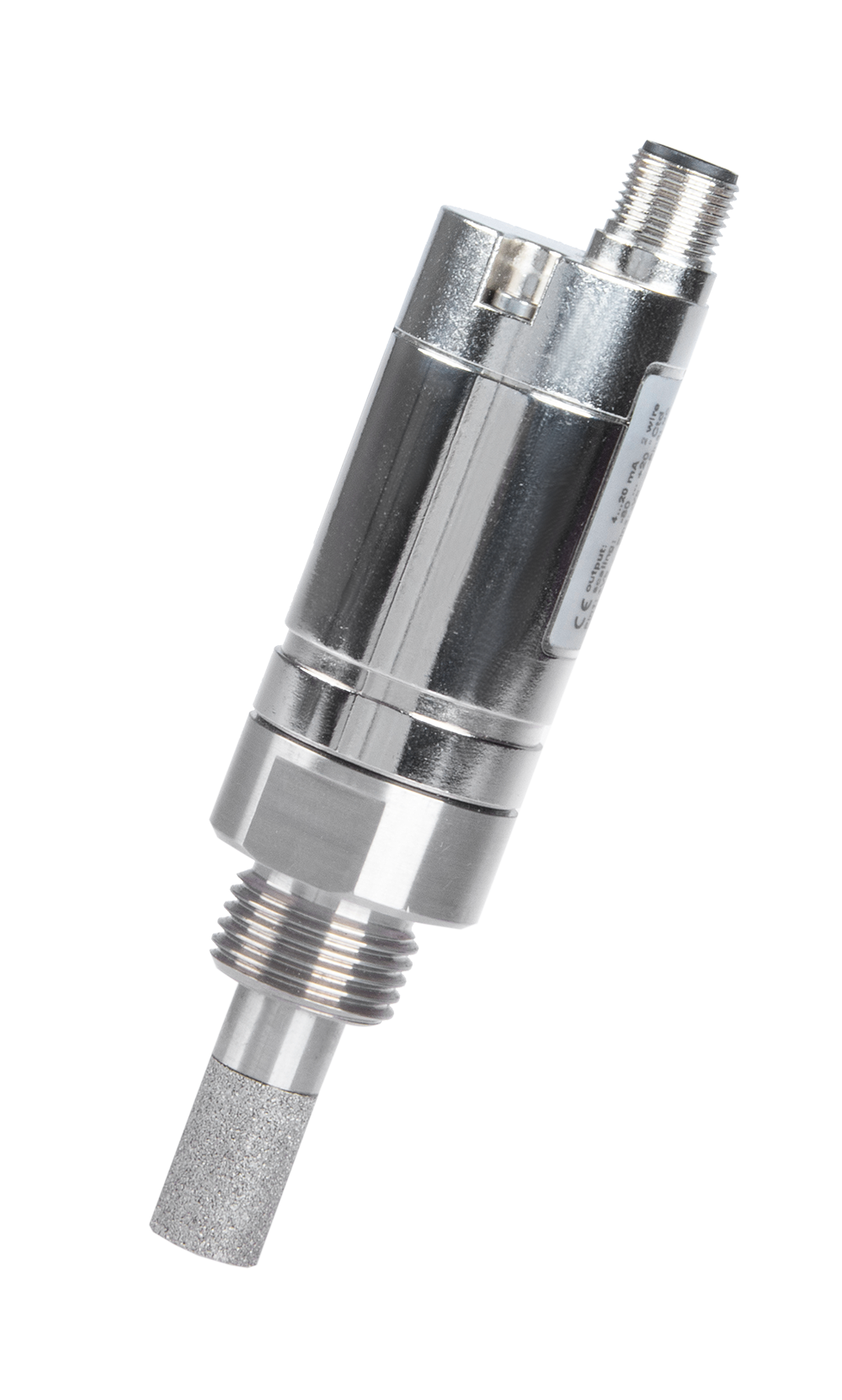
FA 510/515 - Dew point sensor for refrigeration dryers
Dew point measurement from -20 to 50°Ctd. New: with Modbus-RTU interface.
The 2nd gas family includes the fuel gases Natural gas and hydrogen as well as natural gases such as sewage gas or Biogas.
The DVGW G260worksheet defines limits for gas components that may be contained in fuel gases in order to feed them into the public gas network. In order to avoid possible later technical problems and discrepancies in billing at the legal entity boundary, the feed into the gas network must be interrupted if these requirements are not met.
In addition to limit value specifications for impurities such as sulphur, ammonia or silicon, etc., there are also specifications for the requirements for the water content, as this plays a significant role in determining the combustion capacity of fuel gases.
The limit values for the water content during feed-in are defined as follows:

Designation | Unit | Limit value |
| Water content | mg/m3 | 200 (Maximum pressure ≤ 10 bar) |
| 50 (Maximum Pressure > 10 Bar) |
Table 1: Limit values for gas components - water content in mg/m3
If these values are converted to the dew point temperature, i.e. the temperature below which water vapour precipitates as condensate, the following results are obtained:
Designation | Unit | Limit value |
| Dew point temperature | °Ctd | -33° (Maximum Pressure ≤ 10 Bar) |
| -46° (Maximum Pressure > 10 Bar) |
Table 2: Limit values for gas components - water content in °Ctd, 1013.25 mbar, 0°C
The residual moisture content is defined on the basis of the coldest temperature ever measured, and any pressure and temperature fluctuations must also be taken into account in order to rule out the formation of condensation.
When feeding in any fuel gas, care must be taken to ensure that the water content is not exceeded. This can be measured and monitored using suitable measuring devices.
Particularly in winter, or in cold weather, critical components can be damaged by icing, and in the worst case this can lead to a shutdown of the gas supply, as no more Gases can flow through the pipes due to repairs.
In addition to technical problems, an excessively high water content is reflected in a reduced standard gas volume and also in the burner output, as this is specified per standard cubic metre and the more water is contained in a standard cubic metre, the lower the burner output, as more energy is required to evaporate the water. Additional temperature fluctuations exacerbate the problem.
For example, the standard volume measured at 1013.25 mbar and 0°C, with a water content of 0% RH (0°C), is calculated as 1000 Nm3. However, if this standard volume is converted to the actual, real conditions, e.g. to 20°C and 970 mbar abs. with a water content of 60% RH, the result is only 880 m3 of fuel gas instead of 1000 Nm3.
Since conventional Flow meters for fuel gases are not pressure and temperature compensated and therefore do not measure the Standarized volume flow at 1013.25 mbar and 0°C, but only the volume flowing past under the current Ambient conditions, if the water content is too high or the Temperatures fluctuate too much between the Standarized and actual volume flow measurements, more is often deducted than would be expected.